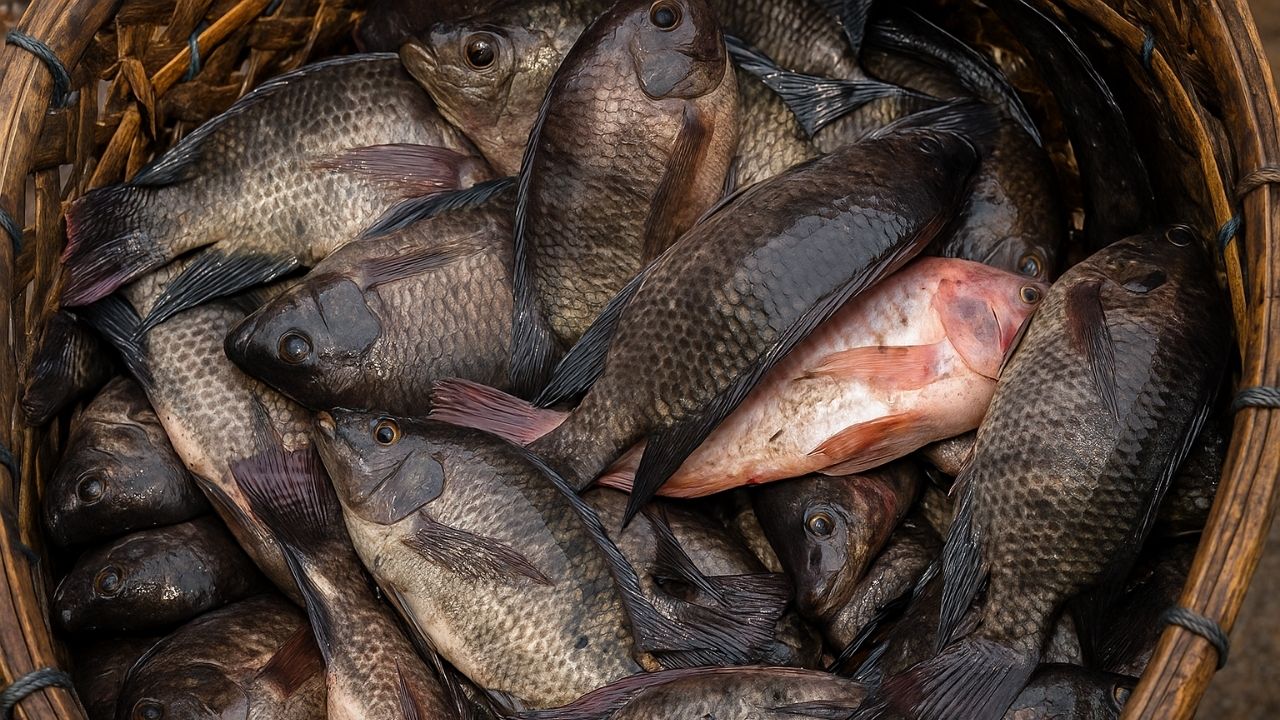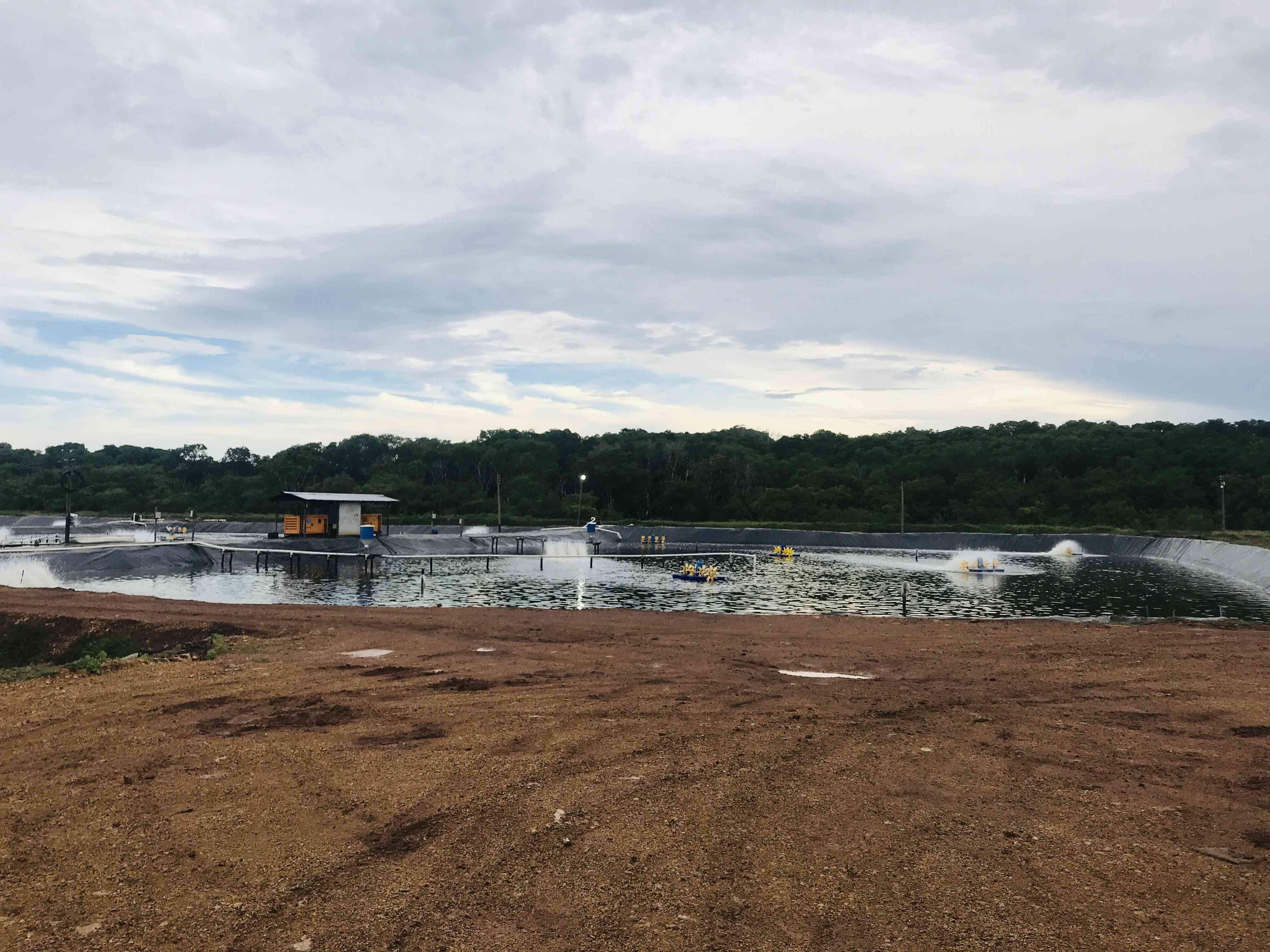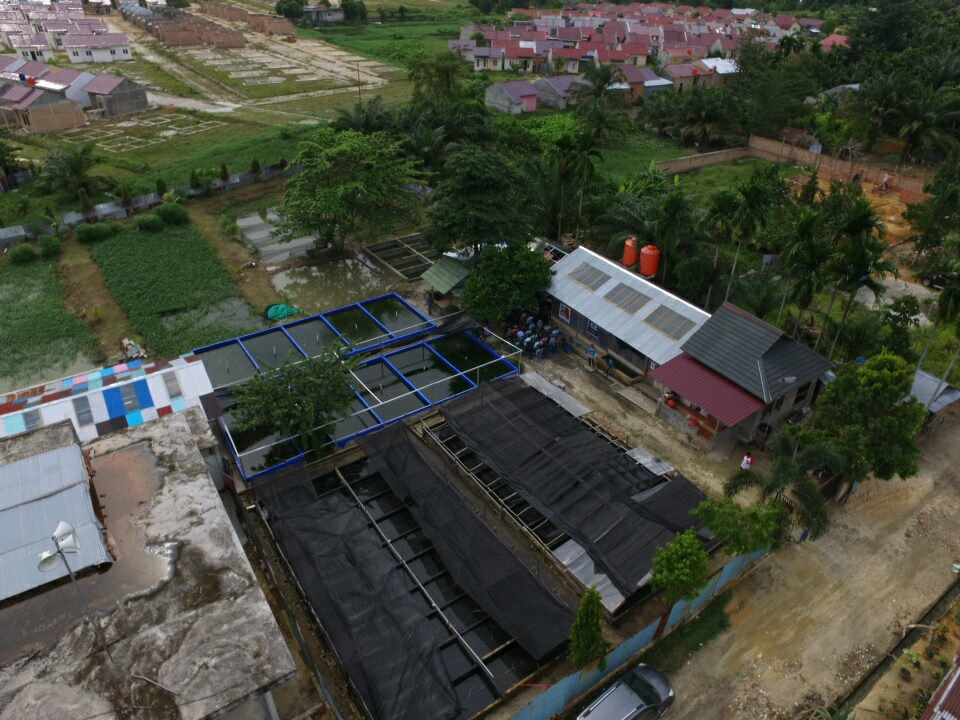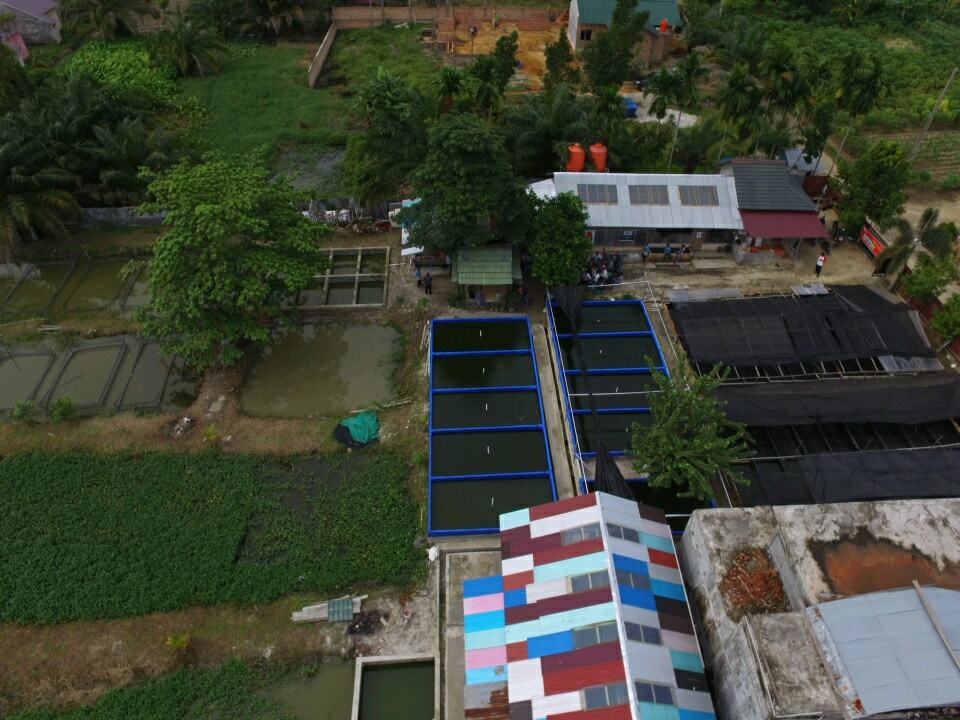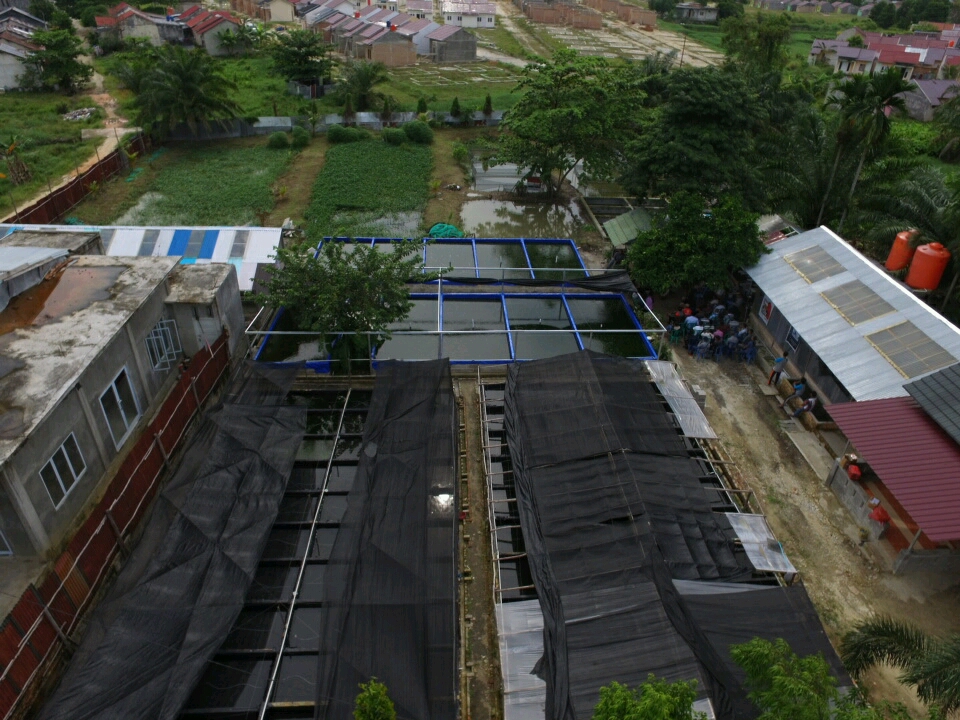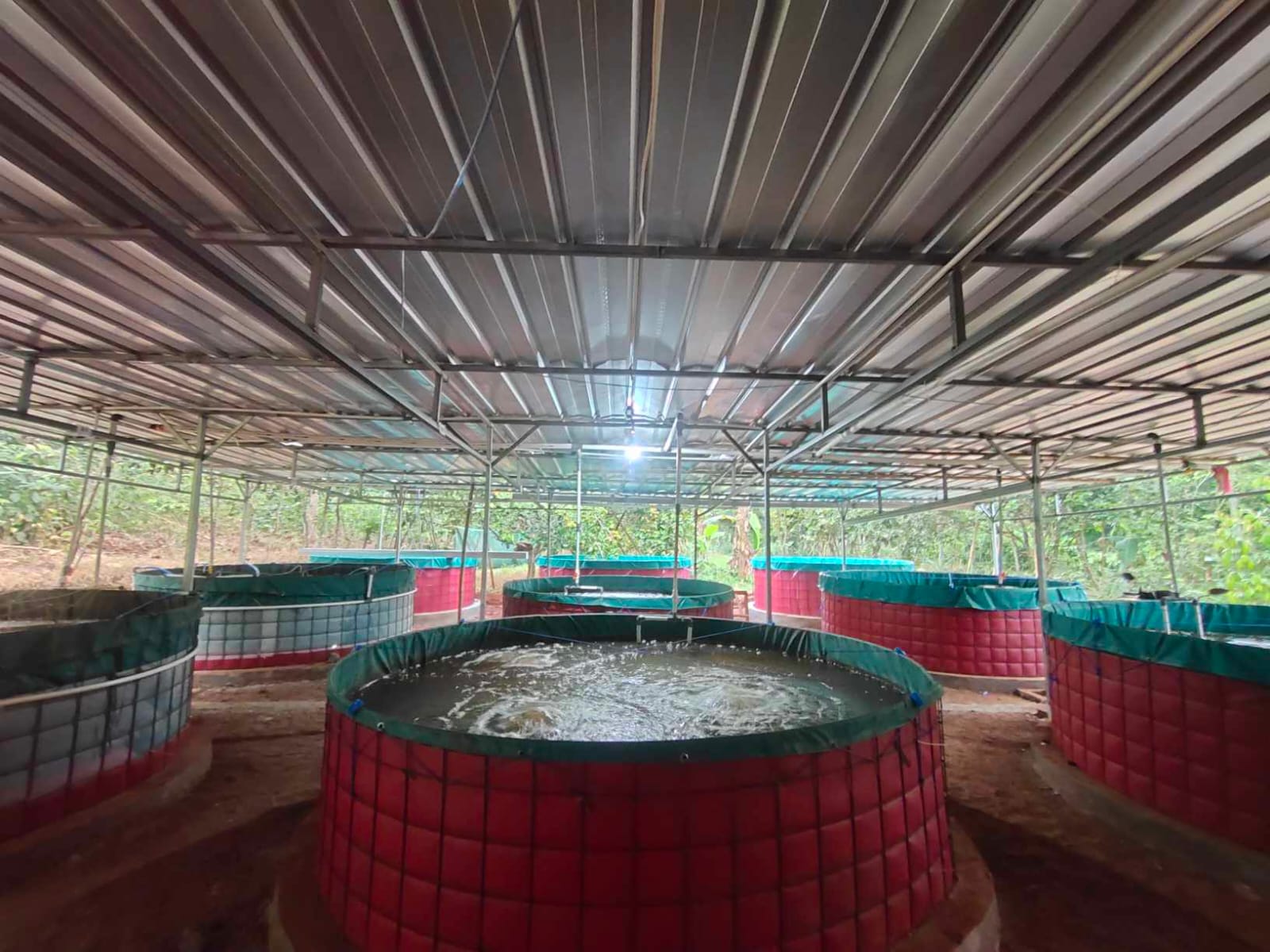The Nile tilapia, Oreochromis niloticus, has quietly established itself as one of the most vital commodities in global freshwater aquaculture. It is not merely a fish but a biological marvel, a testament to evolutionary efficiency prized by cultivators from household ponds to industrial-scale operations. Its prominent agronomic advantages—a relatively short cultivation cycle, a remarkable capacity to adapt to diverse environmental conditions, and an efficient feed conversion rate—make it a cornerstone of modern aquaculture. This popularity is not confined to producers; its mild flavor and affordability have secured it a broad and accepting market worldwide.
Within the context of Indonesia's national ambitions, the role of tilapia transcends simple commerce. It is a strategic asset in the nation's quest for food sovereignty. As an accessible and affordable source of animal protein, it makes a substantial contribution to the nutritional requirements of a population of over 270 million people. The Ministry of Marine Affairs and Fisheries (KKP) reported that domestic tilapia consumption is projected to reach 1.43 million metric tons in 2024, cementing its position as the backbone of the freshwater fish supply. This aligns with a broader government mandate to elevate the National Fish Consumption Rate (AKI), with a target of 62.05 kg per capita set for 2024.
Yet, for all its promise, the expansion of tilapia cultivation in Indonesia is fraught with a complex set of challenges that demand rigorous analysis. Economically, producers grapple with the high cost and volatility of commercial feed, which can account for up to 70 percent of total production expenses, perpetually squeezing profit margins. Environmentally, the unchecked intensification of farming practices, particularly in sensitive ecosystems, risks severe degradation of water quality and aquatic habitats. This report, therefore, aims to conduct a comprehensive examination of the potential and perils of Indonesia's tilapia industry, analyzing it through the three critical pillars of economic viability, social impact, and environmental sustainability. It seeks to answer a central question: can Indonesia harness the immense potential of this resilient fish to build a truly sustainable industry, or will the pursuit of short-term gains lead to long-term ecological and economic decline?
National production trends: a narrative of resilience and maturation
The trajectory of tilapia production in Indonesia over the past five years tells a compelling story of growth, disruption, and resilience, affirming its status as a pillar of the nation's freshwater aquaculture sector. Data from KKP shows a general upward trend, with national output increasing from 1,317,560 metric tons in 2019 to 1,368,542 metric tons in 2023. However, this growth has been far from linear, revealing both the sector's inherent vulnerabilities and its remarkable capacity for recovery.
The year 2020 served as an unprecedented stress test for the industry. Production plummeted by a significant 11.00% to 1,172,633 metric tons, a decline strongly correlated with the global disruption caused by the COVID-19 pandemic.1 The implementation of Large-Scale Social Restrictions (PSBB) across the archipelago paralyzed vital supply chains. This was not merely a matter of market access; the restrictions severed the logistical arteries that supply farms with essential inputs such as juvenile fish (seed), feed, and other production necessities, bringing many cultivation cycles to an abrupt halt.
What followed, however, was a powerful demonstration of the sector's underlying strength. In 2021, production staged a robust V-shaped recovery, surging by 10.91% to reach 1,300,529 metric tons.1 This rapid rebound points to strong market fundamentals, particularly unwavering domestic demand for an affordable protein source, and a flexible, adaptable producer base comprised of countless small and medium-sized enterprises capable of quickly restarting operations. For policymakers and international investors, this demonstrated resilience is a key positive indicator, suggesting the industry is built upon a durable foundation capable of weathering significant external shocks.
Yet, the most recent data presents a more cautionary tale. After a moderate growth of 4.32% in 2022, the rate of expansion slowed dramatically to just 0.88% in 2023.1 This sharp deceleration is more than a statistical anomaly; it is a potential harbinger of systemic constraints. The flattening growth curve suggests that the era of easy, exponential expansion may be concluding. This slowdown is likely the mathematical manifestation of deeper pressures that are now reaching a critical point: the relentless rise in feed costs that erodes profitability and, perhaps more critically, the ecological carrying capacity of key production environments being reached or exceeded. The production figures themselves are beginning to reflect the consequences of the environmental paradox that will be explored later in this report, serving as a forward-looking warning that business as usual is no longer a viable strategy for growth.
Table 1: National Tilapia Production Trends (Metric Tons), 2019-2023
Source: KKP
Contribution to the national economy
On a macroeconomic scale, the fisheries sector, with tilapia as a major component, represents a significant and growing contributor to the Indonesian economy. It is a central pillar of the government's "Blue Economy" strategy, which seeks to leverage marine and aquatic resources for sustainable development. According to KKP data, the Gross Domestic Product (GDP) of the fisheries sector, measured at constant 2010 prices to reflect real growth, reached IDR 290.58 trillion in 2023. This marks a healthy increase from the IDR 275.45 trillion recorded in 2022.
Critically, the sector's growth has outpaced that of the broader national economy. Its contribution to Indonesia's total GDP rose from 2.58% in 2022 to 2.66% in 2023. While seemingly small, this incremental increase underscores the sector's strategic importance as a reliable engine of economic expansion, particularly in a global climate of uncertainty. This steady performance reinforces the government's focus on aquaculture as a key driver of future prosperity.
Beyond its direct contribution to GDP, the tilapia industry plays an indispensable role in ensuring domestic food security. By providing a consistent and widely available source of affordable animal protein, it acts as a natural buffer against food price inflation and supply chain volatility. This function is central to the government's social and economic stability goals, as reflected in the ambitious national target to increase per capita fish consumption to 62.05 kg annually. Tilapia aquaculture is not just an economic activity; it is a fundamental component of the national food system.
The global appetite: tapping a lucrative export market
While the domestic market remains the bedrock of Indonesia's tilapia industry, the potential for growth in international markets is vast and increasingly strategic. The global appetite for tilapia is strong, and Indonesian producers are progressively positioning themselves to meet this demand. KKP data reveals a consistent and impressive growth trend in tilapia exports, which expanded at an average annual rate of 7 percent between 2017 and 2023. This steady trajectory is a clear indicator of Indonesia's growing competitiveness and the stable global demand for its products.
The primary target for these exports is North America, with the United States standing out as the world's largest importer of tilapia. In 2020 alone, US imports of tilapia were valued at USD 615 million, making it a market of immense strategic importance. Success in this arena, however, requires more than just high production volumes. The demand from developed markets like the US, Canada, the European Union, South Korea, and Taiwan is overwhelmingly for processed, value-added products, particularly frozen fillets.
This market preference presents both a challenge and an opportunity. It signifies that the future of Indonesia's export success is contingent not only on its on-farm productivity but, more importantly, on the sophistication of its downstream industries. Capturing a larger share of the global market will require significant investment in modern processing facilities, robust quality control systems, and efficient cold chain logistics. Mastering this step up the value chain is the critical imperative for transforming raw production into lucrative export revenue. While specific export data for tilapia is often aggregated with other fish, the overall performance of Indonesia's fisheries exports, which reached a total value of USD 5.63 billion in 2023, demonstrates the sector's proven capability to compete on the global stage.
A foundation for community development and economic empowerment
Beyond the macroeconomic figures and export statistics lies the profound social impact of tilapia aquaculture. At its core, the industry serves as a powerful engine for local economic development, an instrument of community empowerment, and a catalyst for inclusive growth, particularly in rural and coastal regions where alternative livelihood opportunities may be scarce. When developed in a planned and inclusive manner, the industry has the potential to significantly enhance welfare, reduce poverty, and build socioeconomic resilience at the community level.
The economic influence of a tilapia farm extends far beyond its immediate boundaries, creating a significant local multiplier effect. A single aquaculture operation supports a vibrant ecosystem of ancillary businesses and services. This includes suppliers of feed, seed, and equipment at the upstream end, as well as transportation providers, processing workers, and market vendors at the downstream end. This integrated value chain ensures that the economic benefits are distributed throughout the community, fostering a more robust and diversified local economy. Furthermore, the relatively low capital barrier to entry for small-scale tilapia farming, compared to many other industries, makes it an accessible pathway to economic self-sufficiency for many rural households, offering a tangible tool for poverty alleviation.
Job creation and income enhancement across the value chain
The tilapia aquaculture industry is a significant creator of employment, with opportunities spanning the entire value chain from hatchery to market. Jobs are generated not only in the direct on-farm cultivation but also in the supporting upstream and downstream sectors. The upstream segment requires labor for hatchery operations, feed production, and the manufacturing of ponds, cages, and other equipment. The downstream segment opens up employment in fish processing, cold chain logistics, distribution, and marketing. A report from the international research organization WorldFish projects that the aquaculture sector as a whole could create as many as 8.9 million new jobs in Indonesia by 2030, with tilapia farming expected to be a primary contributor to this growth.
Concrete evidence of this job creation potential can be seen in government-led modeling projects. For instance, a pilot project for Saline Tilapia Cultivation (BINS) in Karawang, developed on an 84-hectare site, successfully created employment for 785 people. On a larger scale, a similar area-based aquaculture model for shrimp in Kebumen absorbed a workforce of 3,161 people, serving as a powerful analogue for the employment potential of well-managed, large-scale aquaculture parks.
Successfully harvested saline tilapia: BBPBAP Jepara
In addition to creating jobs, tilapia farming has proven effective at increasing the incomes of its practitioners. According to KKP data for 2024, the average monthly income for a fish farmer reached IDR 5,136,547, representing a 4.55 percent increase from the previous year. The true significance of this figure becomes apparent when contextualized against national wage benchmarks. This income level exceeds the official Regional Minimum Wage (UMK) in numerous districts and cities across the country. This comparison is critical; it demonstrates that aquaculture is not merely a subsistence activity but a viable profession capable of providing a stable income and a pathway to a higher standard of living. For many rural families, it represents an opportunity to move beyond poverty and build a more secure economic future.
The environmental ledger: confronting the challenges of intensification
Behind the significant economic and social benefits, the rapid and intensive expansion of tilapia aquaculture carries severe environmental risks if not managed according to principles of sustainability. The accumulation of organic waste from uneaten feed and fish metabolism can lead to profound degradation of water quality, particularly in enclosed or semi-enclosed water bodies such as lakes and reservoirs.
The core of the problem lies in a process known as nutrient loading. Commercial fish feed is rich in nitrogen and phosphorus. When applied in intensive systems, a significant portion of this feed is not converted into fish biomass and enters the water as waste. These excess nutrients act as a powerful fertilizer, triggering a process called eutrophication—an over-enrichment of the water. Eutrophication leads to explosive population growth of algae, known as algal blooms, which turn the water turbid, block sunlight from reaching deeper layers, and disrupt the natural aquatic ecosystem. When these massive algal populations die off, their decomposition by bacteria consumes vast quantities of dissolved oxygen (DO), creating hypoxic (low oxygen) or anoxic (no oxygen) conditions. These "dead zones" are lethal to fish and most other forms of aquatic life, leading to catastrophic ecosystem collapse.
In-depth case study: the paradox of Lake Toba
The most critical and illustrative case study of this environmental challenge in Indonesia is found in Lake Toba, North Sumatra. As the world's largest volcanic lake, it is a site of immense ecological and cultural significance. It is also home to thousands of floating net cages (Keramba Jaring Apung, or KJA) that form the heart of an intensive, export-oriented tilapia industry. While an undeniable economic success, this activity has precipitated a chronic ecological crisis.
The source of the pollution can be quantified through the Feed Conversion Ratio (FCR), a measure of how efficiently an animal converts feed into body mass. Research in the Lake Toba cages has reported an FCR of approximately 1.8. This metric is stark in its implications: to produce 1 kg of fish, 1.8 kg of feed is required. The remaining 0.8 kg, or nearly 45 percent of the total feed input, becomes waste that is discharged directly into the lake's ecosystem. With hundreds of tons of feed being used daily across the lake, the cumulative nutrient load is staggering.
This relentless pollution has pushed the lake's ecosystem toward a tipping point, manifested in recurrent mass fish kills. These events are often triggered by a natural phenomenon known as upwelling. During certain weather conditions, the deep, oxygen-depleted anoxic water from the lake bottom is forced to the surface. This sudden turnover brings a massive volume of toxic, oxygen-poor water into the floating cages, suffocating tens of thousands of fish almost instantaneously and resulting in economic losses amounting to billions of rupiah.
Tilapia fish infected with TiLV (Tilapia Lake Virus) disease which can cause mass mortality and a decrease in fish production: KKP RI
The situation in Lake Toba highlights a sharp and dangerous paradox of sustainability. On one hand, the region successfully produces high-quality tilapia for export, with North Sumatra accounting for 91 percent of Indonesia's total tilapia export value, reaching USD 71.89 million. On the other hand, the very practices driving this economic success are systematically destroying the environmental integrity of the lake upon which the industry depends. This represents a form of cannibalistic logic, where the pursuit of short-term production growth is consuming the natural capital that makes that production possible. It is a vicious cycle where the perceived solution—more intensive farming—becomes the root of the problem, creating a model of development that is fundamentally unsustainable and poses a direct financial risk to the producers themselves.
The comprehensive analysis of Indonesia's tilapia aquaculture sector reveals a classic development trilemma. The industry is an undeniable engine of economic growth and a vital instrument for social empowerment, creating jobs and lifting rural incomes. Yet, these benefits are set against a backdrop of profound environmental risk, starkly exemplified by the ecological degradation in Lake Toba. The industry stands at a critical juncture, where its future trajectory will determine whether it achieves long-term prosperity or succumbs to the consequences of its own unsustainable practices.
The path forward cannot be business as usual. The recent deceleration in national production growth should not be viewed as a failure but rather as a crucial signal—an opportunity to pivot from a strategy based purely on increasing volume to one centered on enhancing value and sustainability. This paradigm shift is essential for securing the industry's future and ensuring its contributions to the nation are positive and lasting.
To navigate this complex landscape, a multi-pronged approach grounded in actionable policy, technological innovation, and market incentives is required:
1. Policy and regulation
The government must move to establish and strictly enforce science-based carrying capacity limits for sensitive water bodies like Lake Toba. This involves regulating the density of fish cages and mandating a maximum allowable nutrient load to prevent eutrophication. Stronger enforcement of existing environmental regulations is paramount to ensure compliance and accountability.
2. Technological innovation
Investment must be channeled towards the research, development, and adoption of more sustainable aquaculture technologies. This includes promoting the use of low-polluting, high-efficiency feed formulations with improved FCRs, which would directly reduce the primary source of pollution. For land-based operations, scaling up the adoption of Recirculating Aquaculture Systems (RAS) can offer a closed-loop solution that minimizes water usage and allows for waste treatment.
3. Market-based solutions
Indonesia should leverage the growing global consumer demand for sustainably produced seafood. Developing and promoting a national certification scheme—for example, "Sustainable Indonesian Tilapia"—could allow producers who adhere to high environmental and social standards to access premium markets in Europe and North America. This would turn the cost of sustainability into a competitive advantage and a profit center, creating a powerful market incentive for responsible farming.
Indonesia has a unique opportunity to redefine its aquaculture narrative. By confronting its environmental challenges head-on and embracing a holistic vision of sustainability, the nation can not only secure the long-term viability of its own tilapia industry but also position itself as a global leader in responsible, equitable, and profitable aquaculture for the 21st century. The choice is not between the economy and the environment, but between a short-sighted model of extraction and a forward-looking model of stewardship. The future of the tilapia paradox rests on which path is chosen.




